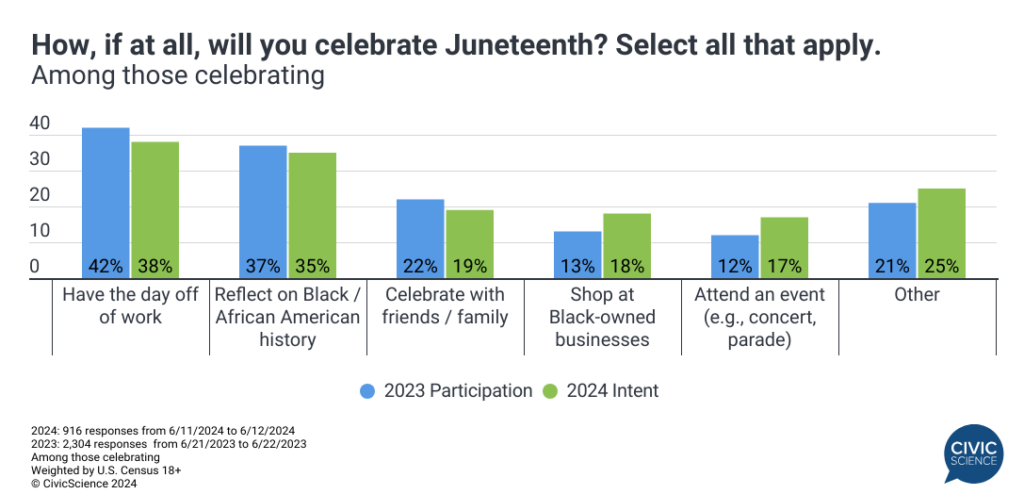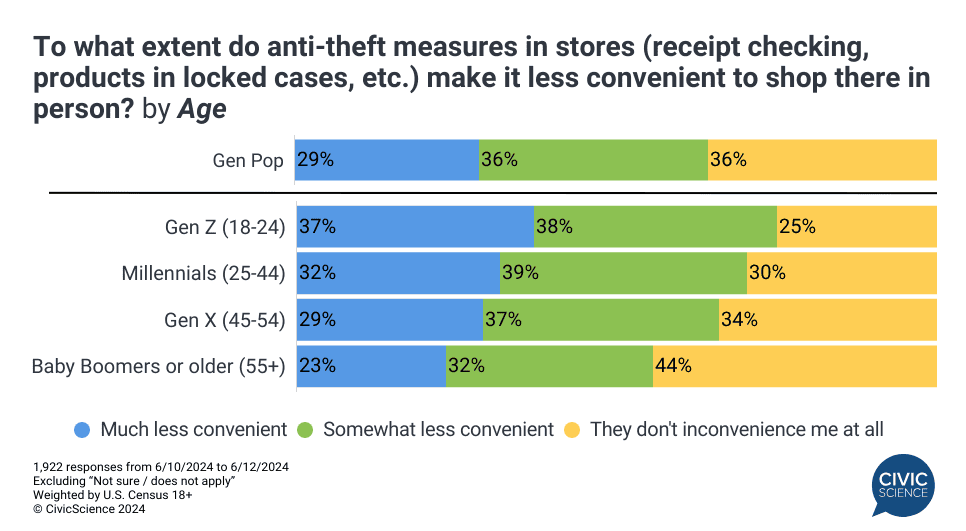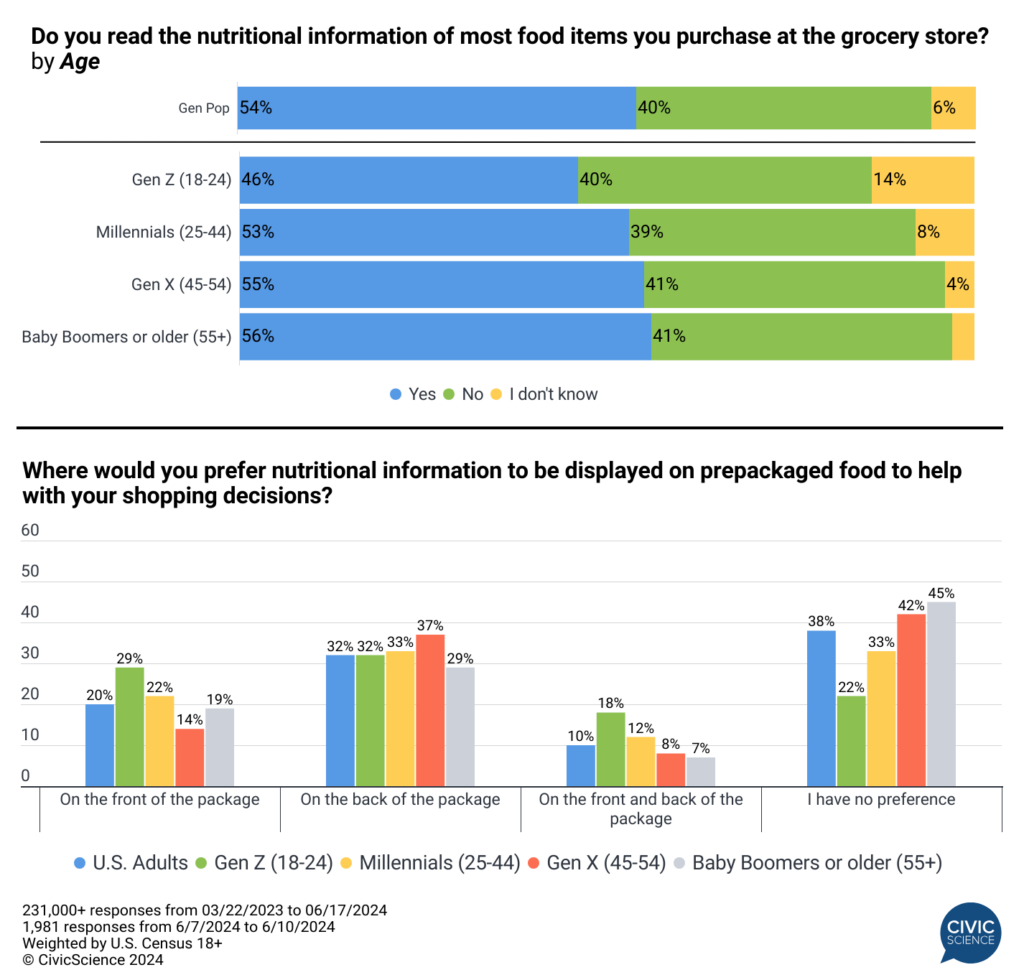CivicScience continually tracks current and anticipated consumer trends. Here are three key insights marketers should know this week. All insights are derived from the CivicScience Social | Political | Economic | Cultural (SPEC) Report, a weekly report available to clients covering the latest news and insights. Start here to learn more about the report and how to access the insights we don’t publish.
1. Americans are increasingly prioritizing shopping at Black-owned businesses for Juneteenth this year.
With Juneteenth approaching this week, CivicScience data show that more Americans intend to celebrate this year (41%) than those who celebrated last year (37%)1. However, their plans to celebrate are different than they were in 2023. For instance, Americans are less likely to report having the day off from work and are less likely to spend the day reflecting on history or celebrating with friends/family. They are more likely to shop at Black-owned businesses and attend events (e.g., concerts, parades) this year.

Take Our Poll: Do you think Juneteenth should be a federal holiday?
2. Most consumers believe certain anti-theft measures used at retail stores make shopping less convenient.
T.J. Maxx recently instituted a policy featuring security employees at some stores equipped with body cameras. The policy is relatively popular with consumers – 60% of Americans agree with the move, compared with only 12% who disagree2.
Consumers are much less favorable toward other anti-theft measures employed by retail stores, such as receipt checks at the door and securing items in locked cases. Two-thirds of consumers find these anti-theft measures to be an inconvenience while shopping. Younger consumers, in particular, are significantly more likely than older consumers to feel that these measures make shopping ‘much more’ inconvenient.

3. Gen Z adults are most welcoming of additional nutritional labeling on the front of food packaging.
How much do Americans pay attention to nutritional labels when they go to the grocery store? CivicScience polling shows 54% of Americans read the nutritional information on most food items they buy, including more than half of Americans aged 25+. Gen Z adults are the least likely to report reading them.
Now, the Food and Drug Administration is expected to propose a requirement that prepackaged foods include an additional nutrition label on the front of the package. Despite Gen Z adults being the least likely to read the information, they are much more supportive than the Gen Pop and older generations of having nutritional information on the front or both the front and the back of packaging. On the other hand, Gen X respondents are more likely to prefer keeping the labels solely on the back.

Weigh in: How closely do you read nutritional labels before purchasing and eating food?
Clients receive the SPEC Report in full, plus access to real-time insights we don’t publish, driven by our database of over 500K questions. Contact us now to see it in action.

